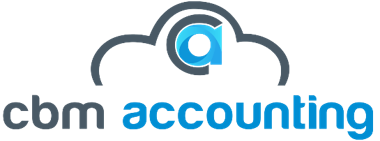[lwptoc]
Running an e-commerce business in the UK presents unique accounting and tax challenges. From managing online sales and inventory to navigating VAT rules and international transactions, it’s crucial to have a solid financial strategy. This blog post offers essential accounting and tax tips to help your e-commerce business thrive.
Integrate Your E-commerce Platform with Accounting Software:
- Automate Data Entry: Use integrations between your e-commerce platform (e.g., Shopify, WooCommerce) and accounting software (e.g., Xero, QuickBooks Online) to automate sales, inventory, and payment data entry.
- Real-Time Insights: Gain real-time visibility into your sales, expenses, and profitability.
- Reduce Errors: Minimize manual data entry errors and improve accuracy.
Understand VAT for E-commerce Businesses
If your taxable turnover exceeds £85,000, you must register for VAT. Key VAT considerations:
- Standard Rate (20%) – Applies to most goods sold online.
- Reduced Rate (5%) – Applies to specific products like children’s car seats.
- Zero Rate (0%) – Applies to items like books and children’s clothing.
- Distance Selling Rules & Import One-Stop Shop (IOSS) – Required for EU sales to simplify VAT payments.
Manage Inventory Effectively:
- Inventory Tracking: Implement inventory management software to track stock levels, manage orders, and prevent stock outs.
- Cost of Goods Sold (COGS): Accurately calculate COGS to determine your profit margins.
- Inventory Valuation: Use appropriate inventory valuation methods (e.g., FIFO, weighted average).
- Regular Stock Checks: Conduct regular stock checks to identify discrepancies and minimize losses.
Navigate VAT Rules for Online Sales:
- VAT Registration: Understand when you need to register for VAT based on your turnover.
- VAT Rates: Apply the correct VAT rates to your products and services.
- Place of Supply Rules: Understand the place of supply rules for VAT, especially for international sales.
- VAT MOSS (Mini One-Stop Shop): If you sell digital services to EU consumers, consider using VAT MOSS to simplify VAT reporting.
- Import VAT: Be aware of import VAT rules when purchasing goods from outside the UK.
- Making Tax Digital (MTD): Ensure compliance with MTD for VAT by using compatible accounting software.
Handle International Sales and Transactions:
- Currency Conversion: Use reliable currency conversion tools and services.
- Customs Duties and Tariffs: Understand the customs duties and tariffs applicable to your international sales.
- International Payment Gateways: Utilize payment gateways that support multiple currencies.
- Intrastat Declarations: If you trade goods with EU countries, you may need to submit Intrastat declarations.
- Brexit Implications: Stay informed about the latest Brexit regulations affecting e-commerce businesses.
Manage Online Payment Processing:
- Payment Gateway Fees: Understand the fees charged by your payment gateway.
- Payment Reconciliation: Regularly reconcile your payment gateway transactions with your bank statements.
- Chargebacks and Refunds: Implement procedures for handling chargebacks and refunds.
- Security: Ensure your payment gateway is secure and PCI DSS compliant.
Claim Allowable Expenses:
- Website Hosting and Domain Fees: Claim expenses related to your website.
- Marketing and Advertising Costs: Deduct costs related to online advertising, social media marketing, and SEO.
- Shipping and Packaging Costs: Claim expenses related to shipping and packaging.
- Software Subscriptions: Deduct costs of software subscriptions used for your business.
- Home Office Expenses: If you work from home, claim allowable home office expenses.
Tax Planning Tips:
- Corporation Tax: Understand your Corporation Tax obligations if you operate as a limited company.
- Self-Assessment: If you’re a sole trader, understand your Self-Assessment obligations.
- Business Structure: Consider the tax implications of your business structure.
- Tax-Efficient Investments: Explore tax-efficient investment options, such as ISAs and pensions.
- Seek Professional Advice: Consult with an accountant or tax advisor specializing in e-commerce.
Utilize Technology:
- Cloud-Based Accounting Software: Use cloud-based accounting software for easy access and collaboration.
- E-commerce Analytics Tools: Utilize analytics tools to track sales, customer behavior, and marketing performance.
- Tax Calculation Software: Use tax calculation software to ensure accurate VAT and sales tax calculations.
Regular Financial Reviews:
- Monthly Reviews: Conduct monthly reviews of your financial statements to identify trends and areas for improvement.
- Profitability Analysis: Regularly analyze your profitability by product and channel.
- Cash Flow Forecasting: Develop and regularly update cash flow forecasts.
Stay on Top of Tax Deadlines
Missing deadlines can result in penalties. Key dates include:
- VAT Returns – Usually quarterly.
- Corporation Tax – Due 9 months and 1 day after the financial year-end.
- PAYE & NICs – Monthly payroll submissions.
- Self-Assessment Tax Return – Due 31st January (for sole traders and partnerships).
Stay Updated:
- HMRC Guidance: Regularly review HMRC guidance on VAT and other tax-related topics.
- E-commerce Regulations: Keep up-to-date with changes in e-commerce regulations.
- Industry Trends: Stay informed about industry trends and best practices.
By implementing these accounting and tax tips, e-commerce businesses can improve their financial management, reduce their tax liability, and increase their profitability. Remember to seek professional advice when needed, and stay up-to-date with changes in relevant laws and regulations. Let CBM accounting be your trusted partner!
For further assistance, visit our official website: https://cbmaccounting.co.uk/ .

